By Christopher Miskimon
The German town of Goch lay east of the Reichswald forest, a scene of heavy fighting for the British Army as it ground its way steadily into the heart of Germany. The 107th Regiment, Royal Armored Corps, and elements of the 79th Armored Division had taken part in the fighting there through much of February 1945. The poor condition of the local roads had made tough going for the Churchill tanks of both units, as much an enemy as the antitank mines and dogged German resistance.
After clearing the forest, Goch fell. It was February 20, 1945. However, some of the pillboxes on the town’s outer defense line continued to be occupied by German troops still willing to fight. To solve this dilemma the British troops devised a successful technique that would destroy or capture them. First, Churchill tanks armed with either 75mm cannon or 95mm howitzers would shell the bunker in question. If the Germans inside still held out, then Churchill AVREs, an engineer version armed with a large mortar called a Petard and capable of lobbing 40 pounds of explosives, would move in, protected by the gun-armed tanks. The AVRE would hit the bunker, the massive charge doing substantial damage to the emplacement’s interior and hopefully inducing surrender. If that also failed, the Churchill Crocodiles would come in, flamethrowers mounted in their hulls. A stream of flame would be fired, and one last chance for surrender given. If the soldiers in the pillbox still refused to give up, the structure would be doused in fire.
The Churchill tank was one of the most produced British tank designs during World War II, with over 5,600 being built. It was also one of the most widely modified, and Churchills found use in a variety of nonstandard yet vital roles. The Churchill’s beginning, however, was filled with development problems and design changes. Most, or at least enough, of these problems were overcome so that the tank gave good service right up to the end of the European war.
At the start of World War II, British Army doctrine divided tanks and their roles into three distinct categories. Light tanks were intended for reconnaissance. Cruiser tanks were designed to speed through gaps in the enemy’s defenses and plunge deep into their territory, akin to the horse cavalry of an earlier time. Finally, the infantry tank was meant to move with the infantry and support its attacks. Infantry tanks would have heavy armor to defeat antitank guns and a low top speed since they only needed to keep up with the walking pace of the foot soldiers.
The Churchill was designed as an infantry tank, with initial pilot models, designated A20, ordered soon after the start of the war in September 1939. As such, thought was given to the characteristics it would need to support infantry. The vehicle would need armor at least 80mm thick to resist all known enemy anti-tank guns then in service. The top speed requested was only 10 miles per hour. Based on World War I experience, the Army believed the tank would need to be able to cross trenches, obstacles, and shell craters. Its decision makers wanted a crew of seven and an armament of two 2-pounder guns and three machine guns. Trials began in June 1940. There were troubles with the transmission, and it was discovered that the pair of 2-pounders in the hull had to be eliminated.
France had fallen early during the trial period, negating the chance that the vehicle would have to fight in the conditions it was designed for, but development continued nonetheless. At this point Great Britain was thought to be in imminent danger of invasion, with most of its tanks destroyed or abandoned in France. It was decided to finish development with some changes and get the tank into production. It was now designated the A22 and named for British Prime Minister Winston Churchill. This rush to bring the Churchill into service was largely responsible for the early mechanical troubles, as there was no time for the normal testing that would reveal weaknesses and solutions.
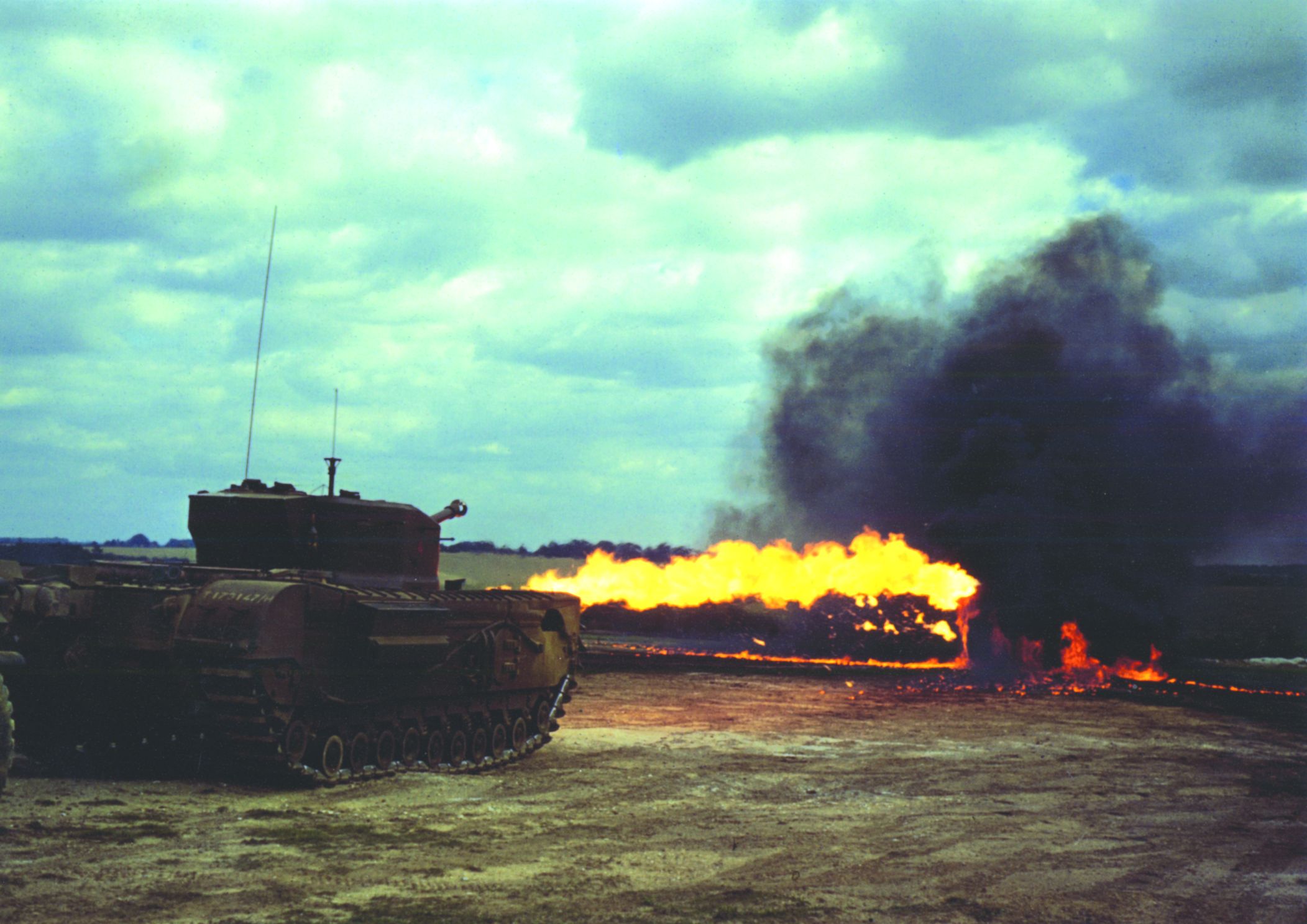
Three of the Tanks were Modified to Carry Flamethrowers and Five were Equipped to Lay Canvas “Carpet” on the Beach.
The first model to enter service was designated the Churchill Mark One, sometimes simply called the Churchill I. It was armed with a 2-pounder gun in a cast turret with a coaxial machine gun. Mounted in the hull was a 3-inch howitzer. The hull of the tank consisted of a mild steel layer a half-inch thick onto which the armor plates would be riveted or bolted. The tracks ran all the way around the hull, reminiscent of World War I British tanks. This allowed the hull to extend within the tracks, so that the interior was more spacious, making the Churchill a prime candidate for modification into the many variants later seen. Maximum armor thickness was 102mm, quite thick for the early war period. Weight was correspondingly high at nearly 40 tons. Top speed was 15.5 miles per hour with a range of 90 miles, powered by a 12-cylinder Bedford engine at 350 horsepower. The crew of five included a commander, gunner, loader, driver, and co-driver. Its length was 24.5 feet, with a width of almost nine feet and a height of just less than 11 feet.
Of the many Churchill variants, two figured prominently in the tank’s first combat use. The Mark II simply replaced the 3-inch howitzer with a second machine gun, and the Mark III carried a new turret with a 6-pounder gun. Close-support versions of the Churchill placed the 3-inch howitzer in the turret instead of the 2-pounder.
The first combat action for this design would not occur with British tankers, but with their Canadian Allies. Churchills of all three Marks, issued to the Calgary Regiment of the Canadian Army, were assigned to go ashore for the raid on Dieppe, France, on August 19, 1942. Three of the tanks were modified to carry flamethrowers and five were equipped to lay canvas “carpet” on the beach. Plans called for the tanks to assist the attacking infantry in causing as much damage as possible to the town’s port facilities, German garrison, and a nearby airfield. The carpet-laying Churchills would unroll their fabric and wood carpets to help the other vehicles get better traction on the stones of the beach’s shingle. The rest of the vehicles would follow and scale a seawall with help from the engineers.
Things went awry almost as soon as the operation began. Two of the tanks wallowed in the water and never even got to shore. Twenty-seven more reached the beach, which was covered by small stones. These stones got into the tracks of a number of Churchills, breaking them and leaving the tanks stuck on the beach. Teams of engineers had been detailed to use explosive charges and materials to build ramps over the seawall to help the vehicles get over it. These engineers were not able to carry out their tasks, so the armor was left to get itself over this obstacle. Only 15 were able to get over the seawall and move inland to support the infantry as heavy German fire covered the beach.
Once inland, the Churchills were stopped by more concrete obstacles placed by the Germans to prevent the movement of tanks into the town. Engineers were supposed to remove these obstacles as well but things did not go according to plan. The tanks did engage what targets they could, knocking out a number of bunkers and an immobile French tank used by the Germans. One Churchill even drove into a building to knock it down and dislodge its defenders. The last wave of Churchills, still aboard landing craft offshore, was never sent in by the operation’s commander. German fire was heavy, and slowly the attackers were pushed back toward the sea. None of the tanks were recovered, and only a single man of the Calgary Regiment’s tank crews that went ashore returned to England.
For its part, the Churchill actually proved resistant to enemy antitank fire except for the tracks, which, besides being vulnerable to breakage from the stones of the beach, also fractured when directly hit by enemy shells.
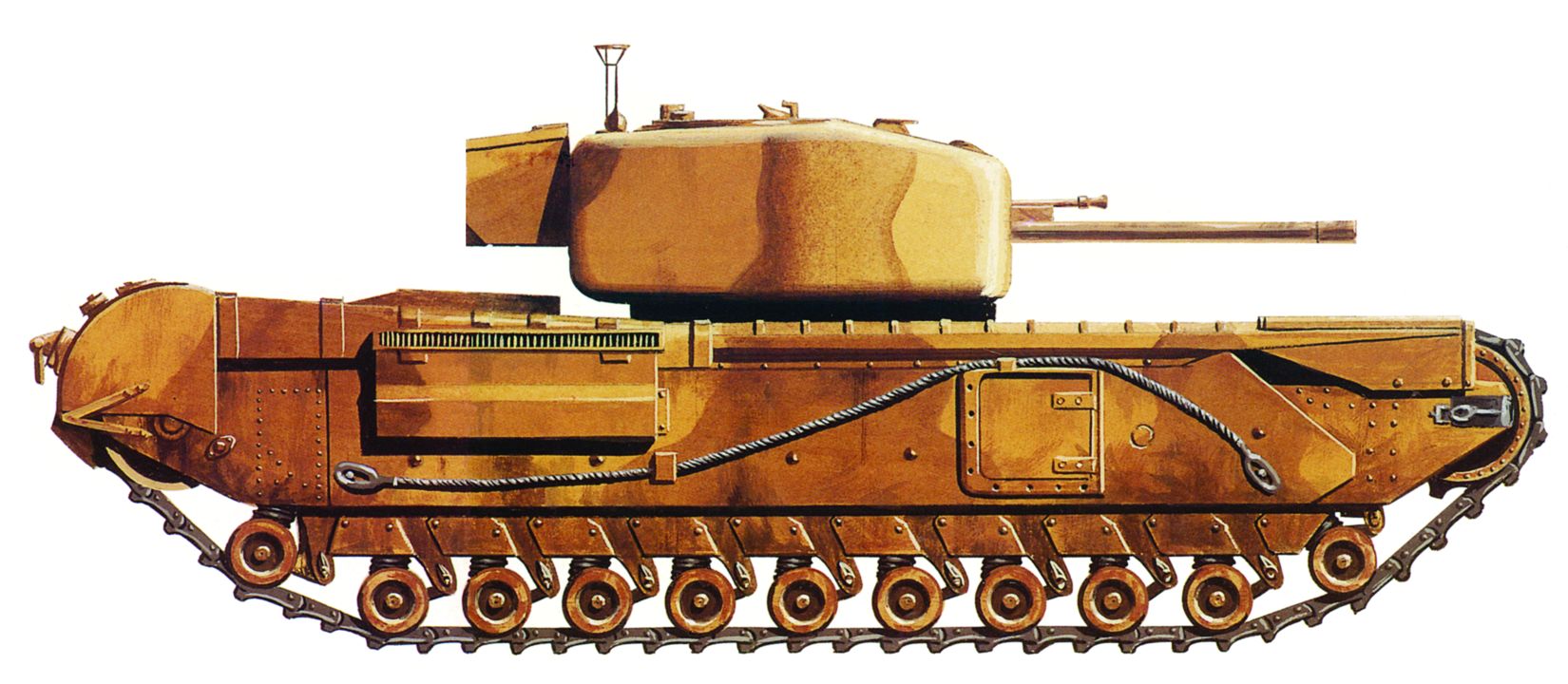
Later, a copy of a German report on Dieppe was received by the British. It criticized the Churchill as being weakly armed with obsolete, ineffective weapons, equipped with tracks that broke easily and armor plating of poor quality. However, only two of the 29 tanks were penetrated by the German antitank guns, despite numerous hits on many of them.
The next action for the tank came in North Africa. Concerns over whether the tank could withstand desert service resulted in six Mark IIIs being sent to Egypt to find out. Formed as part of an ad hoc group known as Kingforce, under Major Norris King, they went into action at the Second Battle of El Alamein. King led three Churchills against dug-in panzers and 88mm cannon near a position known as Kidney Ridge. A furious deluge of fire greeted them, but the trio of tanks pressed on.
One Churchill was forced to retire, however, when its cannon’s recoil system failed. A second Churchill advanced into action and disappeared, then was seen reversing back toward British lines out of the smoky battlefield. Suddenly, the tank started to burn and only one of the crew got out. Later, an examination of the tank revealed the terrible punishment it had absorbed. In all, 38 rounds of German 50mm and six rounds of 75mm shells had hit the tank. Only one round of each caliber had penetrated, and one of those rounds had breached the fuel tank.
Eight rounds from British 6-pounder guns had hit the tank in the rear, and four of these had gotten through the armor. These shots apparently came from a nearby Australian battery of antitank guns. Two explanations exist for why the Churchill was fired upon by the battery. One states that the Churchill’s silhouette, being new to the Australian gunners, was mistaken in the smoke for a panzer and engaged. The second story goes that the smoke from the burning Churchill was obscuring the line of sight for the antitank guns, so they shot it so it would burn out more quickly. Major King, in the third tank, took eight hits but remained operational and hit four German tanks in return.
Morrell was Given Permission to try Converting 75mm Cannon on the Tank but was Warned that if it Failed and He Ruined an Otherwise Serviceable Churchill, His Career was as Good as Over.
Kingforce fought again a week later at Tell el Aqqaqir. This second and last engagement for the unit proved once again the Churchill’s toughness. Although one tank endured a turret failure before engaging, several others took tremendous punishment. One was hit 30 times but suffered only a broken track, while another took nine hits that resulted finally in a jammed turret. King himself was in a Churchill that had a German 50mm round fly right through the driver’s vision port and into the crew compartment. Believing the tank was about to catch fire, the crew abandoned it. Before long, they realized it was not burning, and it was driven off the battlefield.
Several Churchill-equipped regiments were used in the tough fighting in Tunisia. It was here that British ingenuity spawned a variant not on the testing grounds, but in the combat zone itself. Captain Percy Morrell was an officer in the 665th Tank Troops Workshop, a unit that scrapped damaged tanks deemed too expensive to fix. Morrell noticed that the gun mantlet of the Churchill cast a shadow that provided a clear aiming point for German gunners. A number of Churchills had been hit around this area. Also, by mid-1943 the 6-pounder armament was fast becoming obsolete and lacked a high-explosive round. With the fighting in Africa finished, several Churchill units were being held back from the fighting in Italy, apparently due to this issue.
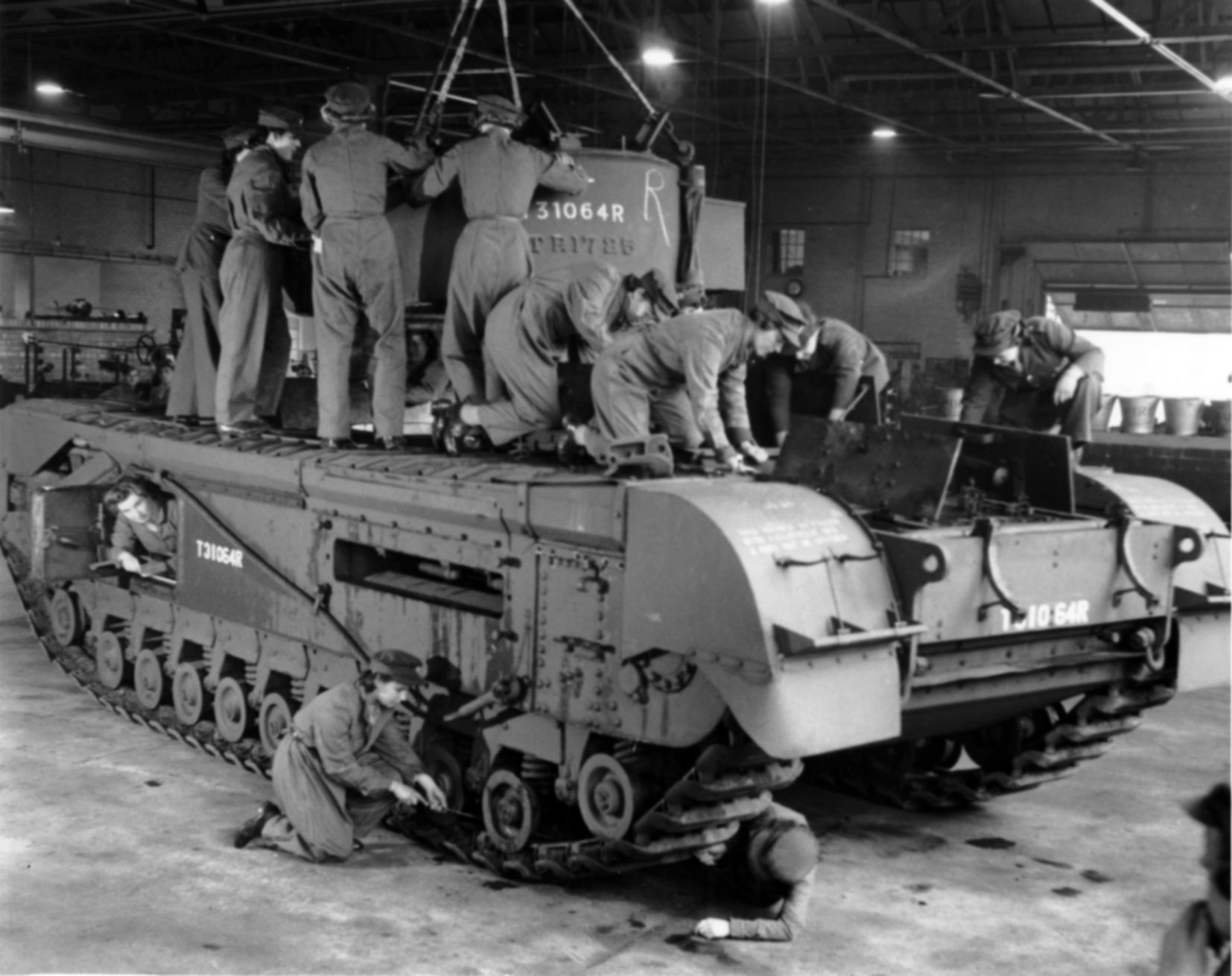
There were also a number of Sherman tanks, equipped with 75mm cannon, in the scrapyard. Morrell studied, took measurements, and concluded the 75mm gun would fit into a Churchill turret with some modifications. He was given permission to try a conversion but was warned that if it failed and he ruined an otherwise serviceable Churchill, his career was as good as over. Luckily, the conversion was a success, and over 200 tanks were so equipped. For his part, Morrell was rewarded with a promotion to the rank of major. Given the designation Churchill (NA) 75, with the NA standing for North Africa, these tanks served in the Italian Theater. Meanwhile, the first Mark VI Churchill models, also armed with a 75mm cannon, came into production. Many earlier versions were upgraded as well.
The design’s versatility would be taken a step further with the Normandy invasion. Sir Percy Hobart, commander of the 79th Armored Division, oversaw the development of specialized tanks that would help ensure the landings’ success. Collectively, these vehicles would come to be known as “Hobart’s Funnies,” a name the general despised.
The first was the Churchill AVRE (Armored Vehicle, Royal Engineer), which was built with a set of standard fixtures so it could be adapted to carry different equipment as needed. For getting across ditches, the vehicle could carry the Small Box Girder (SBG) Bridge that would unfold from atop the tank. Fascines, bundles of wood that could be dropped into a ditch, could also be carried. The carpetlayer, used earlier at Dieppe, carried a large roll of canvas over the hull that played down across the front of the tank, went under, and then trailed behind to leave a roadway for vehicles that might otherwise bog down in the sand.
AVREs could also be equipped with a 290mm Petard mortar in the turret. It could throw a 40-pound explosive charge up to 80 yards to smash bunkers and obstacles. Engineers also appreciated the side escape hatches, which they could use to exit during battles with less exposure to enemy fire.
The second was the Churchill Crocodile, an improved flamethrower tank. The flame unit was carried in the hull in place of the machine gun, so the main gun was still available for use. An armored trailer was towed behind and carried enough fuel for 80 one-second bursts at ranges of up to 120 yards. This variant was particularly feared for obvious reasons, and enemy gunners would often aim for the trailer, hoping to disable it before the Crocodile could get into flame range.
Clarkeforce Knocked out 13 Assault Guns and Took 230 Prisoners for the Loss of 11 Churchills, 3 Stuart Light Tanks, and a Recovery Vehicle.
These specialized variants were the only Churchills to see action on D-Day; the first regular regiments did not join the fighting until the end of June. The British give some of the credit for their successful landings to the modified Churchills of the 79th Armored. AVREs used their Petard mortars to destroy German defenses on both Juno and Sword Beaches, working in concert with other armored vehicles and engineers. Once committed, Churchills took part in the attacks to break out from
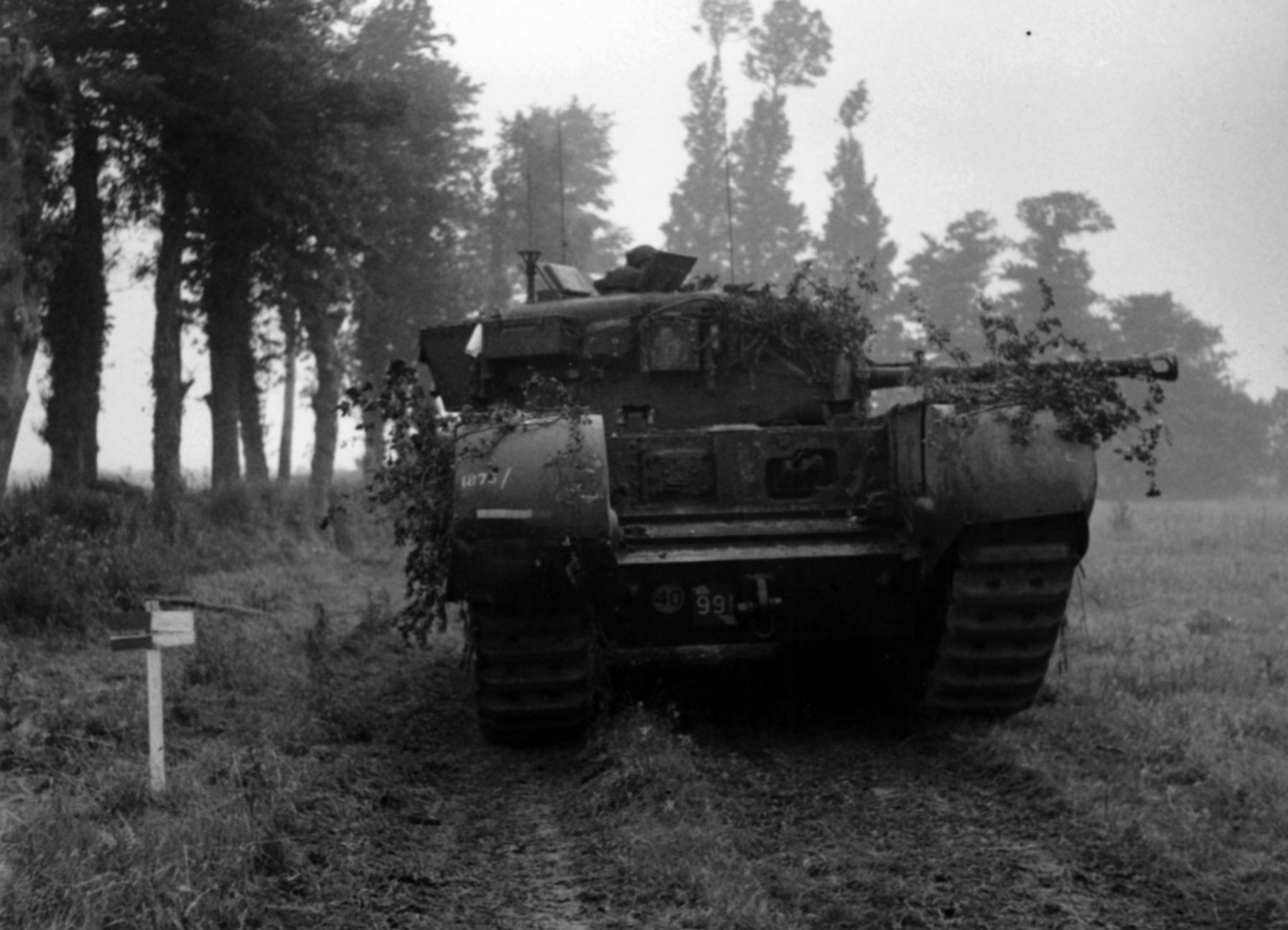
Normandy. The 31st and 34th Tank Brigades, along with the 6th Guards Tank Brigade, fought during this period, mostly in support of various infantry formations.
During the advance into the Low Countries, one Churchill formation, the 107th Royal Tank Regiment, was combined with infantry, artillery, engineers and tank destroyers to form Clarkeforce, named for its commander, Brigadier W.S. Clarke of the 34th Tank Brigade. The unit’s mission was to spearhead an advance to take the Scheldt Estuary, needed to secure the major port of Antwerp, Belgium. It was a deep penetration into German lines, a daunting task for an infantry tank unit.
The flat terrain was punctuated by woods and waterways, the former defended by the Germans and the latter impeding maneuver. Fighting ended after 10 days from October 20-30, 1944, during which the force went 25 miles and fought numerous engagements. Clarke issued a report the following week, noting the losses on both sides. Clarkeforce had fought mostly against assault guns and infantry, knocking out 13 of the assault guns and taking some 230 prisoners for the loss of 11 Churchills, three Stuart light tanks, and a recovery vehicle. Supporting units lost a further 19 Churchills, though only seven of the combined total were considered unrecoverable. Even against the improved antitank weapons of the late war, the Churchill could still hold its own better than most other Allied tanks.
The fighting around Goch was one of the last actions fought by Churchill units, though some did see action during the Allied airborne assault across the Rhine. With war’s end, some Churchills were retained in service. A few later saw action in Korea. Most were scrapped or disposed of, however, gradually replaced by Centurions or late-war British designs like the Comet. The Australian Army kept some in service until 1956, and the Irish Free State received four of them. One was kept in working condition until at least the 1970s, still capable of firing until ammunition was no longer manufactured for it. A few can still be seen at museums and war memorials in Britain, Europe, and the United States.
Despite development problems, the Churchill tank, much like its namesake, doggedly continued in service and eventually proved a versatile and capable design.
Christopher Miskimon served in the U.S. Army in both the infantry and artillery. He writes out of Denver, Colorado.
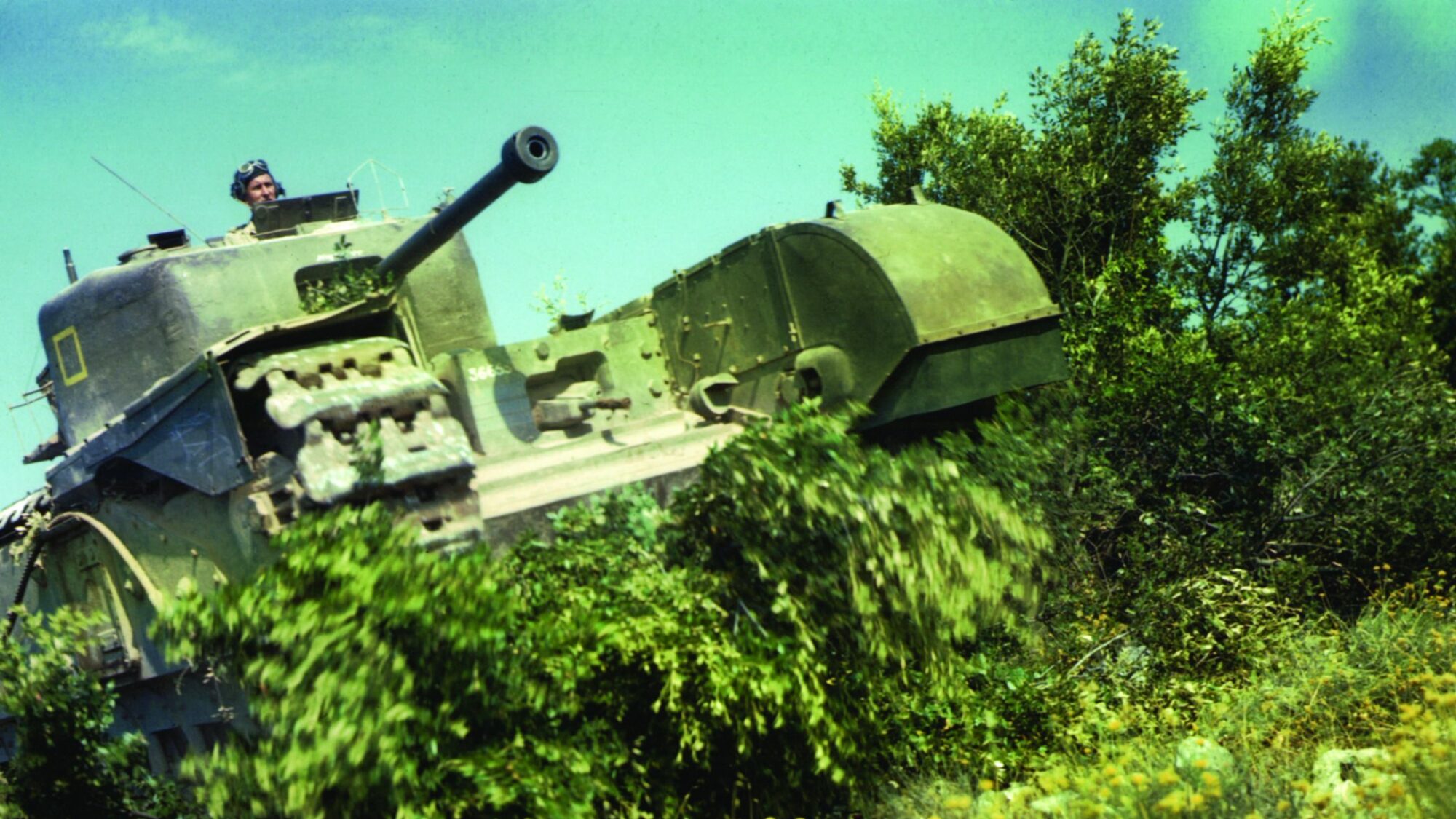
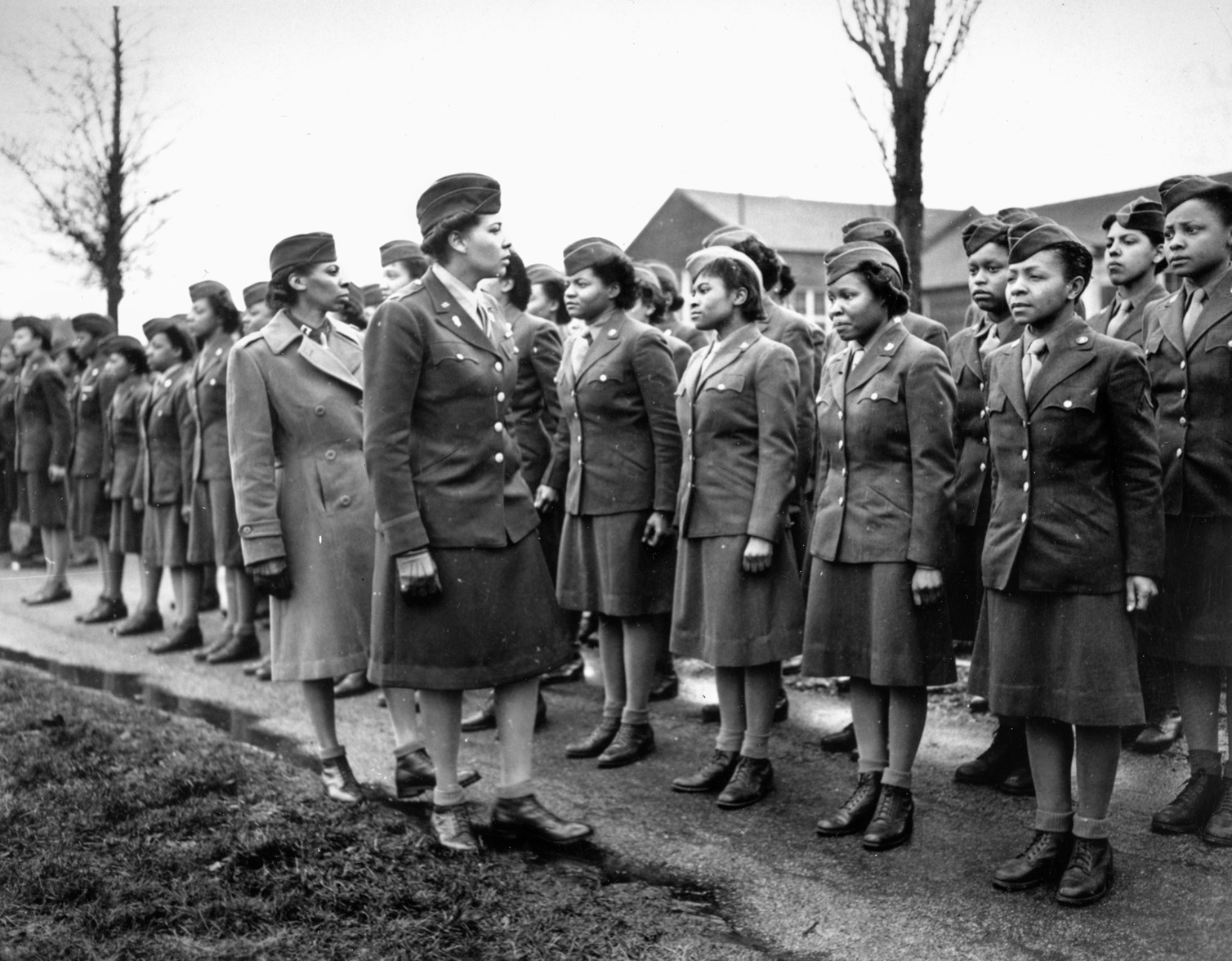

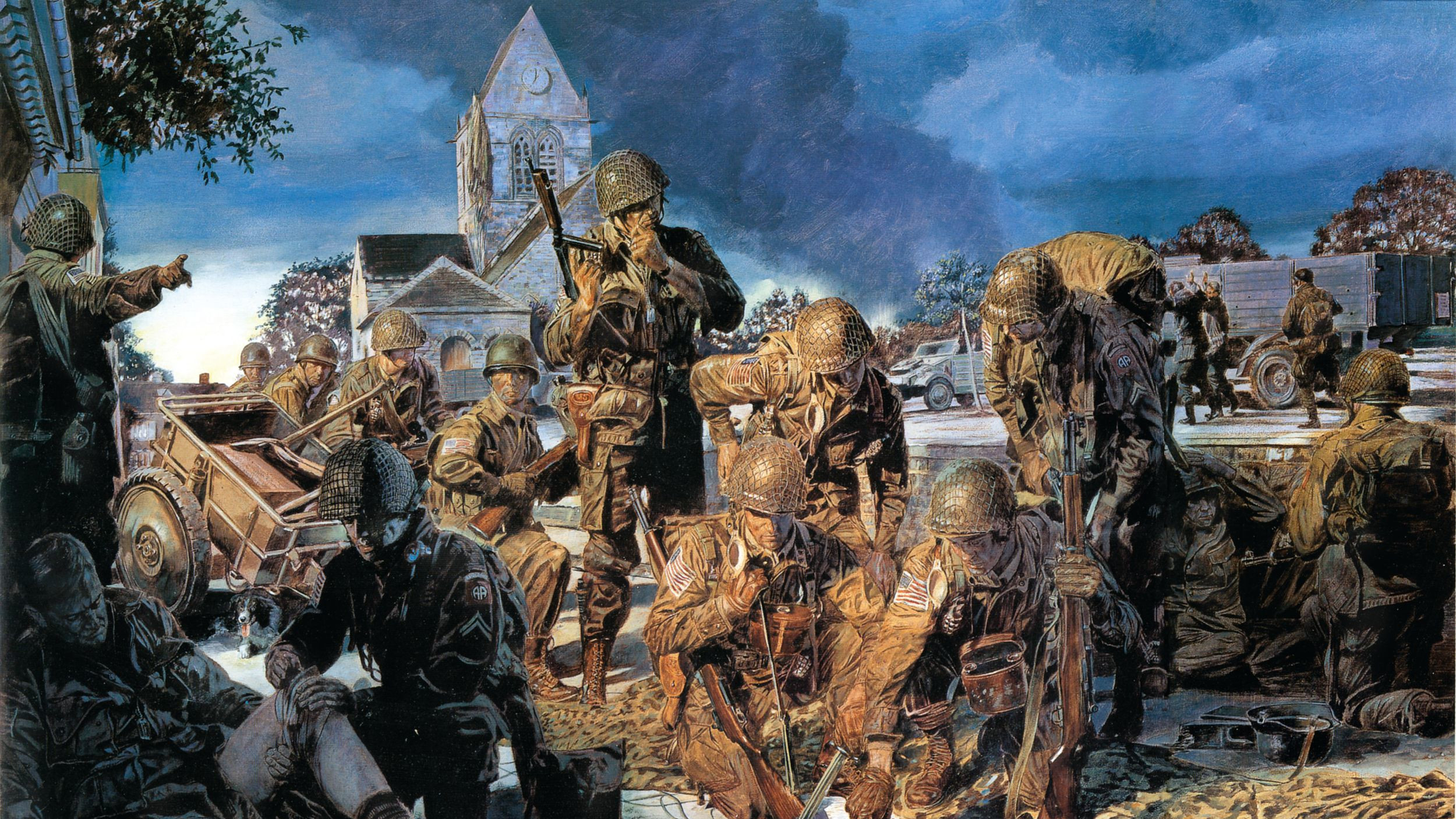
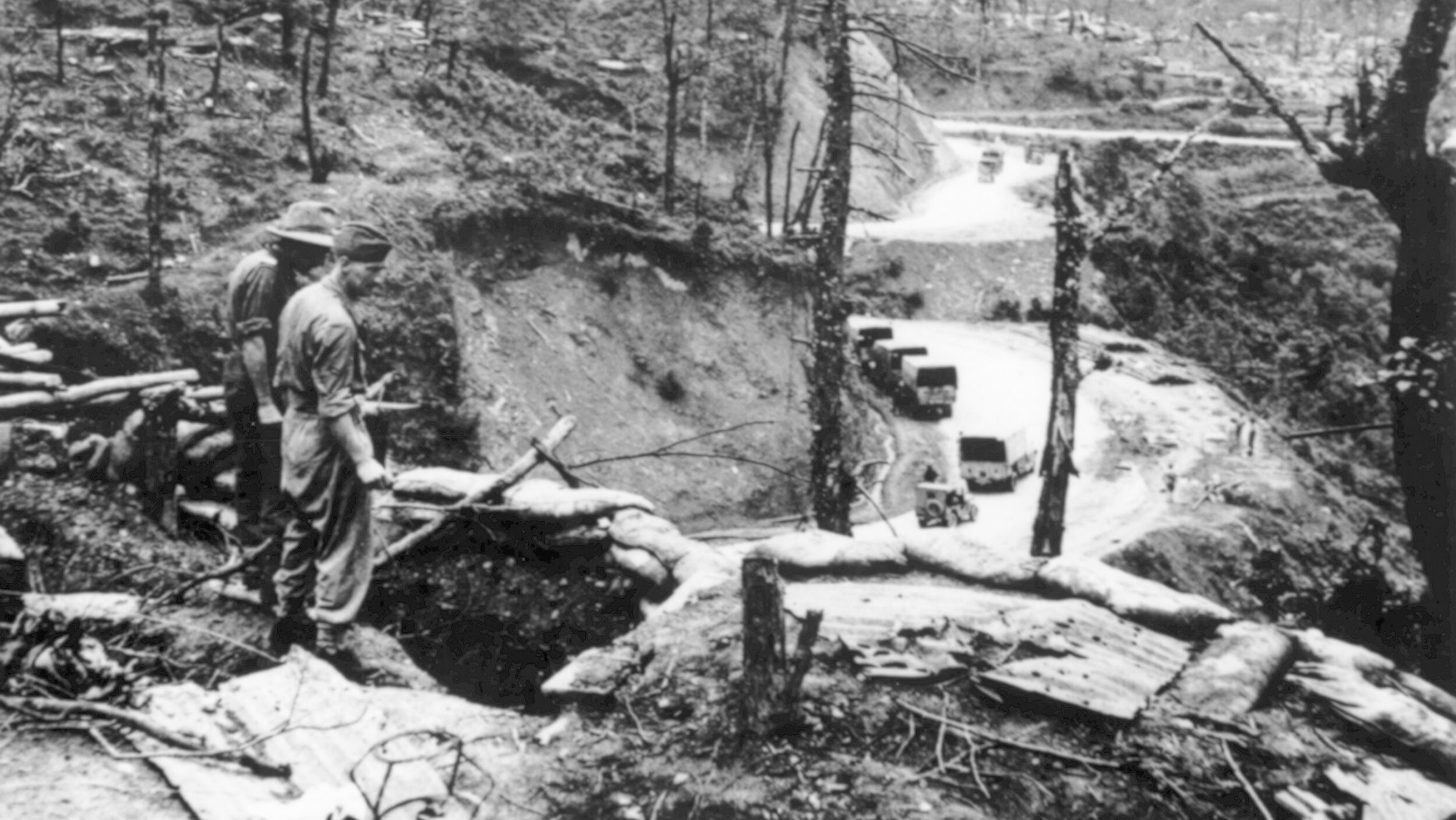
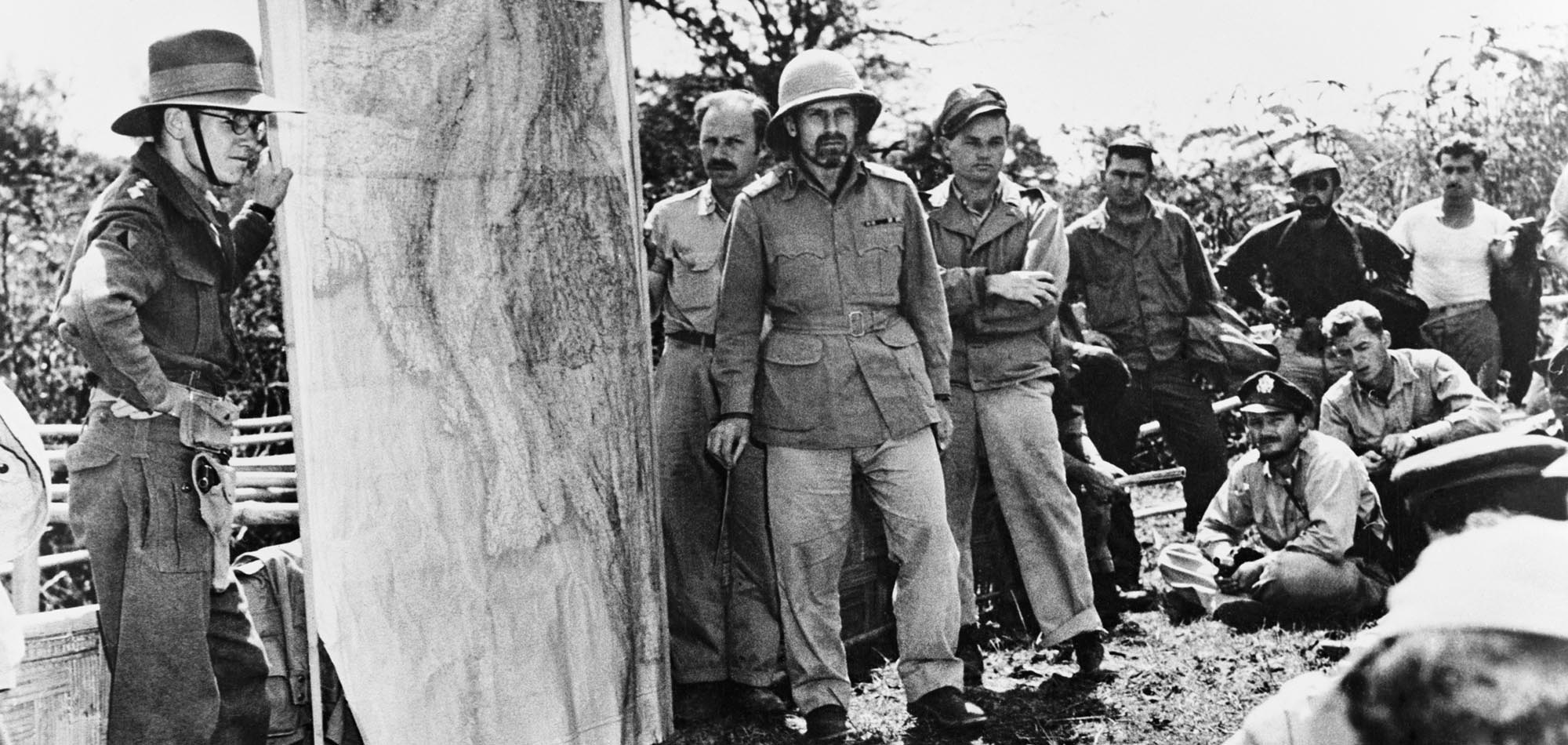
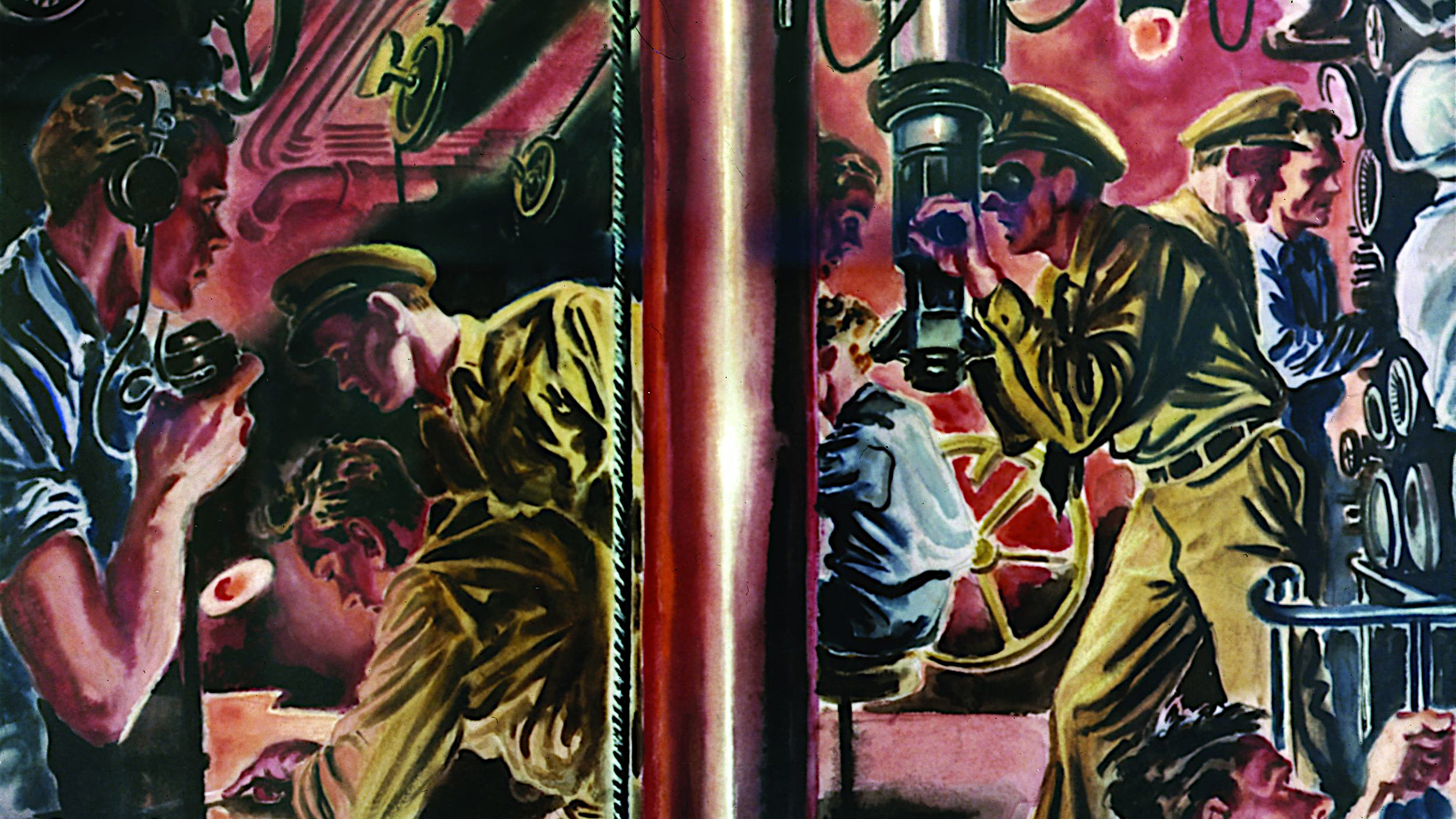
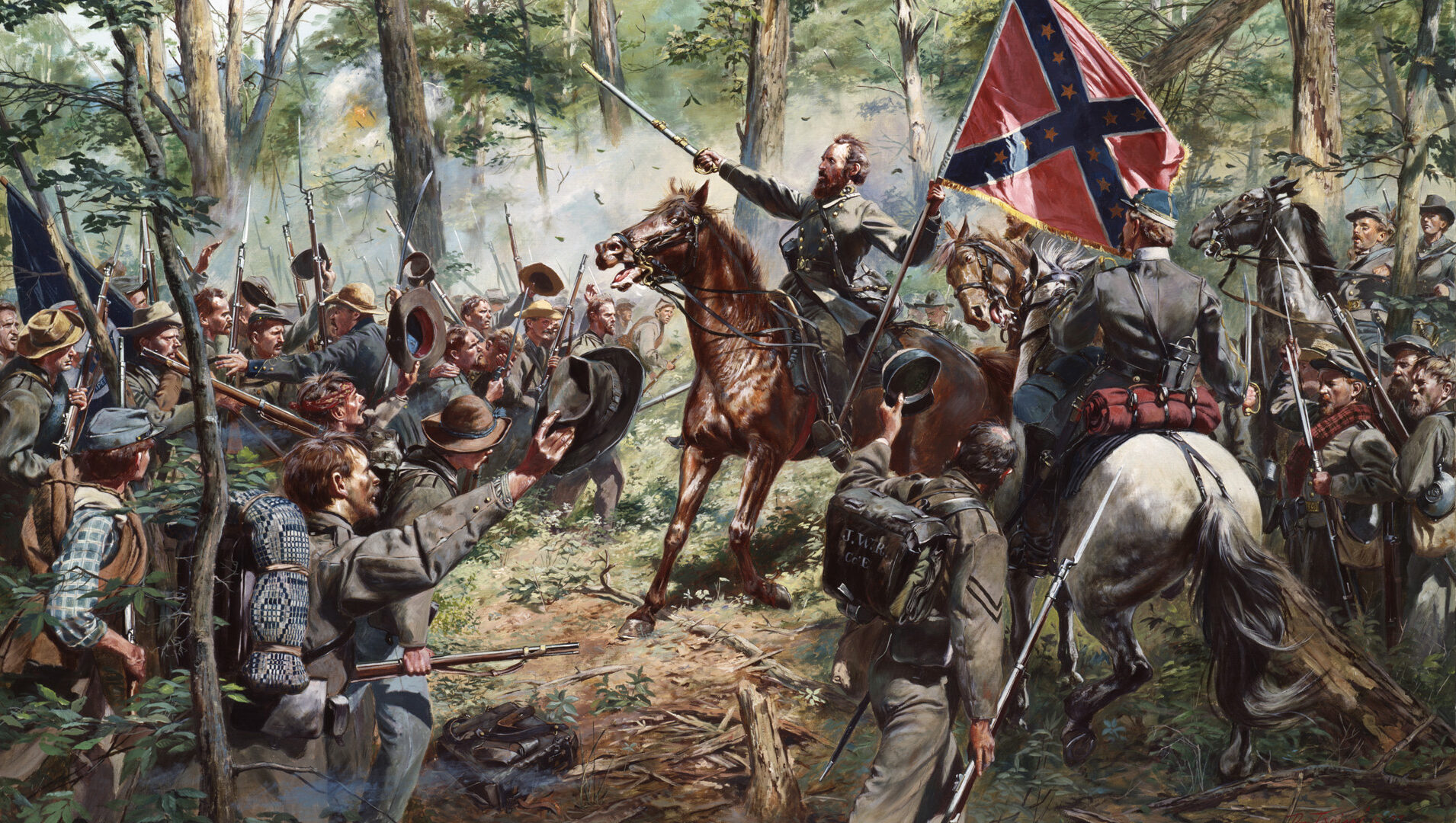
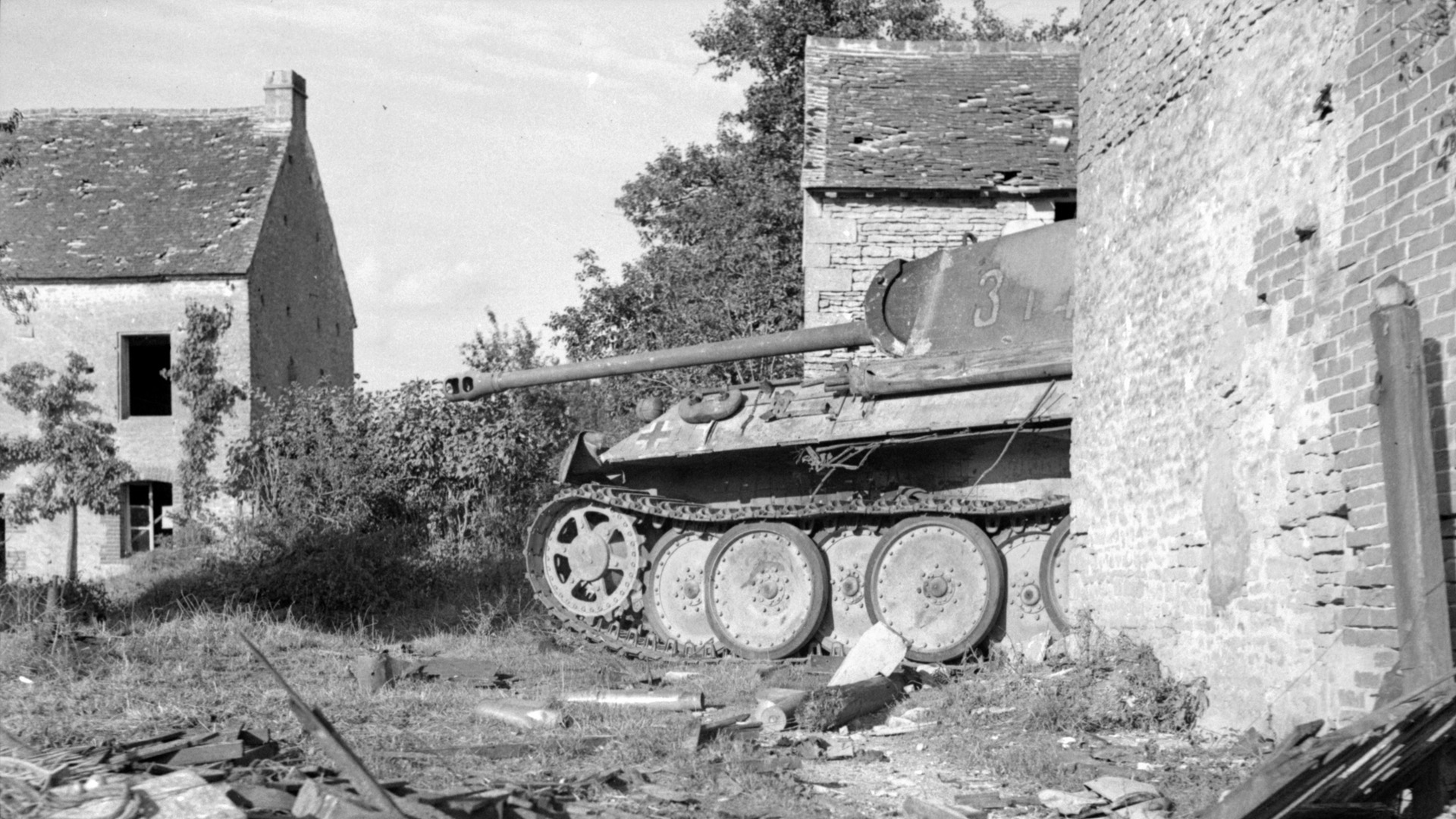
Forgive me, but that has got to be the ugliest tank of WWII. Big ol’ slab-sided thing. Yikes.
Its operational history proves that looks aren’t everything, though. (I’m not so great-looking myself.)